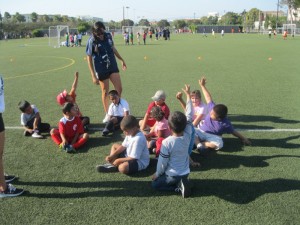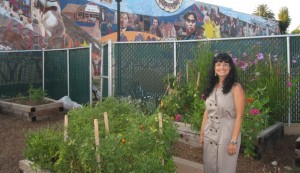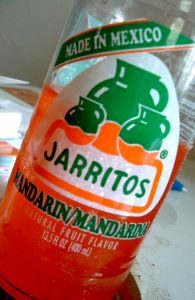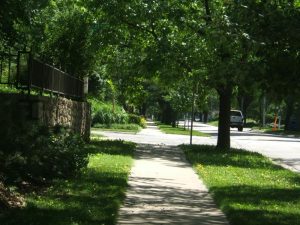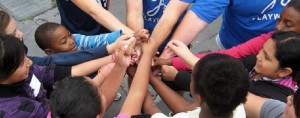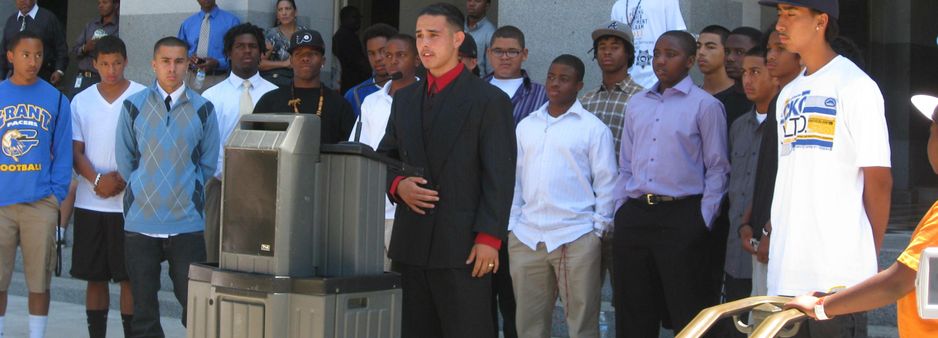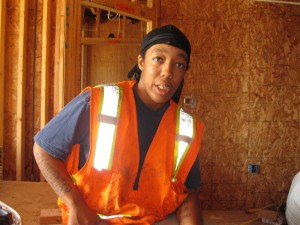
A group of kids in South Los Angeles is getting a lesson in nutrition during a break in their “Soccer for Success” practice session.
“Who can tell me what is a grain?” asked a coach at a “Soccer for Success” session with young children last summer on a South Los Angeles playing field. “Wheat!” a young boy called out.
“Who knows the difference between a good wheat and a bad wheat?” she asked next. “One is a brown one and one is a white one.”
Several of the kids, mostly five- and six-year olds, called out white and then one said brown.
“You get a high five for that one,” the coach said. “The brown one is better. If you eat bread, if you eat pasta, if you want to eat anything the brown grain is better, OK?”

This young boy was sure he had the answer to a nutrition question asked during the “Soccer for Success” practice.
“So let’s recap, guys. Which one’s better, brown or white?” All the kids shouted “Brown!” in unison.
Not long after the grain training session was over, the youngsters got a snack that underscored the lesson.
The nutrition session was all part of the “Soccer for Success” program, which in South Los Angeles is run by the Brotherhood Crusade. It’s a sports-based child and youth development initiative, largely funded by foundations, with the goals of combating obesity, reducing youth violence, promoting healthier lifestyles and increasing family and youth engagement in the community.
But rather than just focus on physical activity – soccer – for losing weight, it also stresses eating fresh, quality foods instead of high-calorie, high-fat processed foods. Experts know that weight loss takes both increased activity and cutting back on rich foods with little nutritional value.
The nutrition segment I witnessed has a significant effect on the kids, said George Weaver, administrator with the Brotherhood Crusade. During the 90-minute soccer workout sessions, the coaches take two breaks to teach the children and youth about healthy eating. The topics change each week, covering nuts, grains, fruits, vegetables, etc.
The kids become inspired by what they learn, said Weaver. “In a lot of cases, our parents are participating in buying fresh fruits because their kids are saying, ‘No, no, no, we’ve got to buy this!’” and pushing their parents to make healthier purchases.
“They’re relaying this information to their parents,” he said.

George Weaver, with the Brotherhood Crusade, and me on a South LA soccer field during a “Soccer for Success” session.
Each year, about 1,500 South Los Angeles children and youth will participate in the free soccer/healthy lifestyle program. And the fact that it’s free is essential, as few of the parents could afford to pay for it.
In addition to raising awareness among the young about healthful eating choices – lessons they’ll retain their entire lives – kids are also losing weight, Weaver said. One girl lost 13 pounds, he said, and a boy 10 pounds.
This two-minute video, called “How Celeste Amaya Lost Weight….While Having Fun!” tells the story of one girl’s weight loss after she joined the “Soccer for Success” program. That weight loss allayed her mother’s fear that she would develop diabetes.
And “Soccer for Success” goes even beyond the important goals of physical fitness and healthy eating, said Weaver. It’s also about building self-confidence, acquiring life skills and turning South LA schools and recreational centers into true community hubs.
The program is funded by the U.S. Soccer Foundation, the California Endowment and other foundations, as well as city and corporate donors. For more information visit www.ussoccerfoundation.org/our-programs/soccer-for-success.

